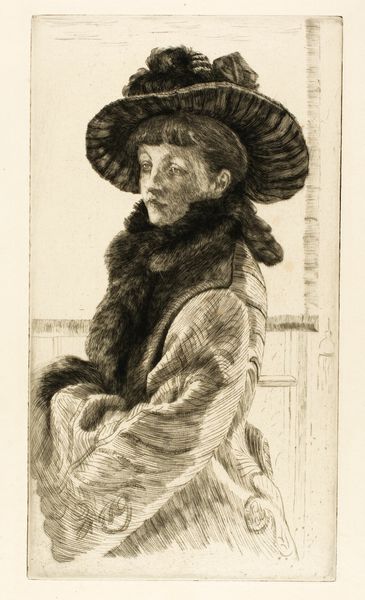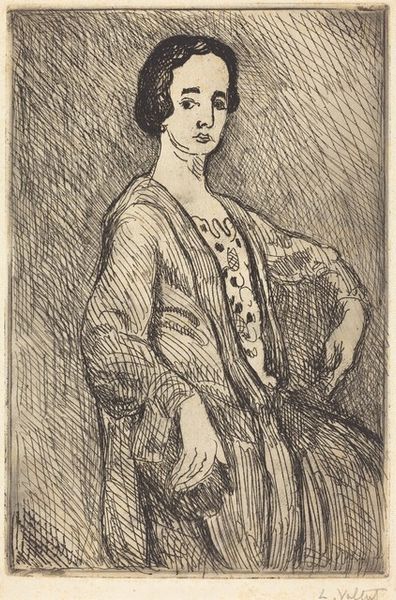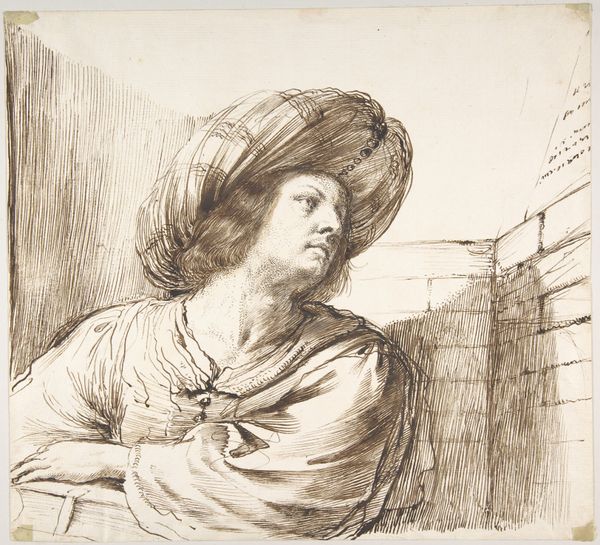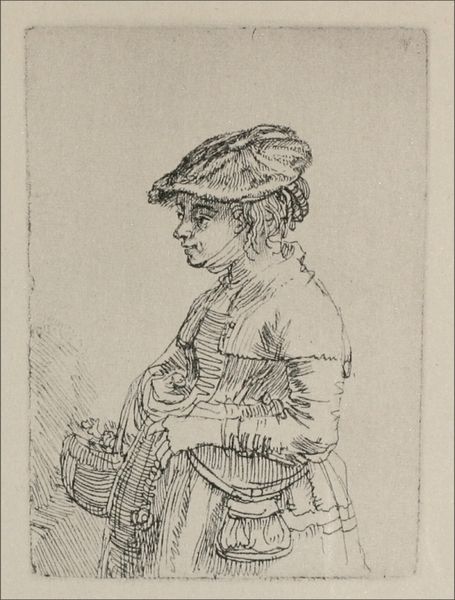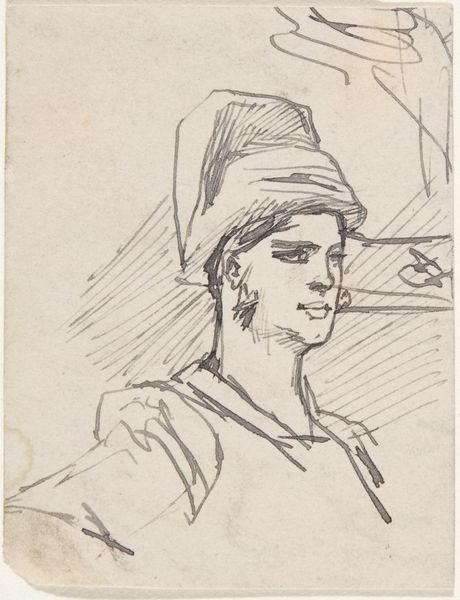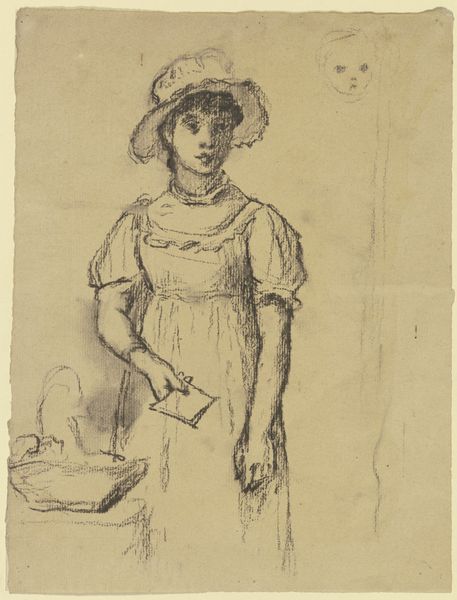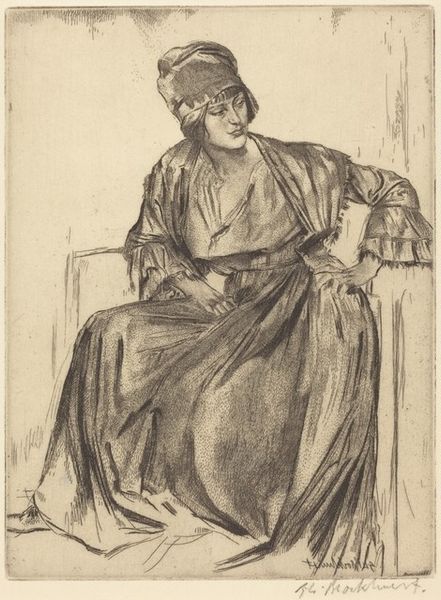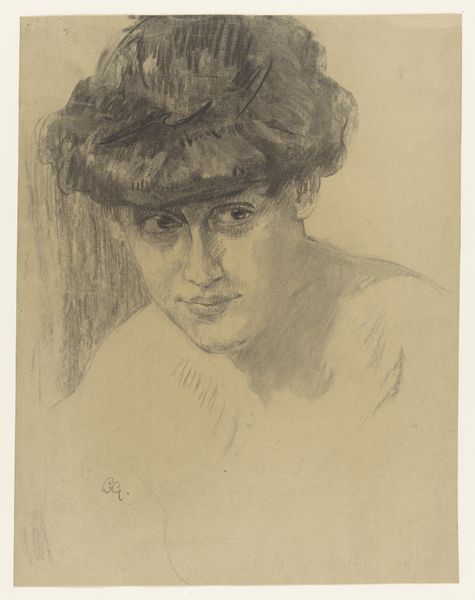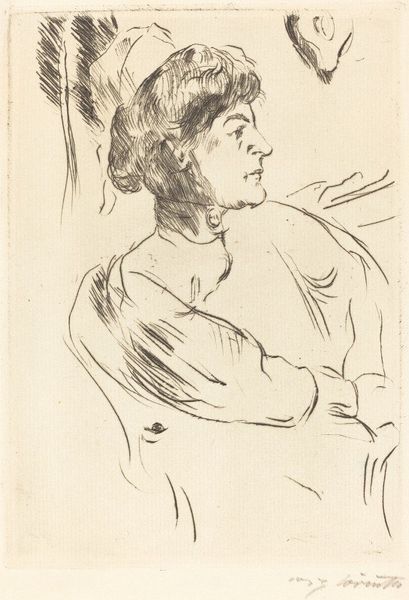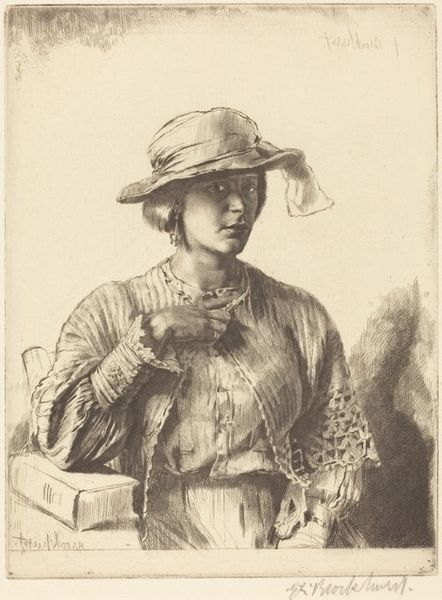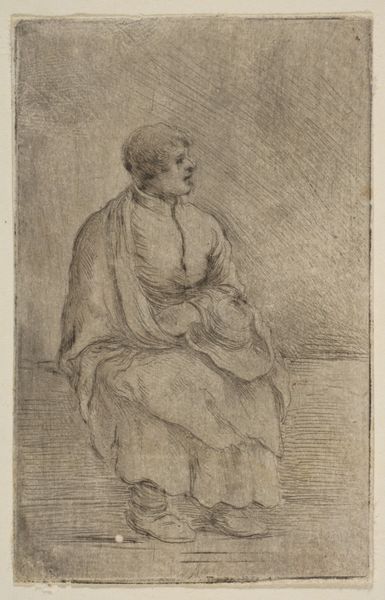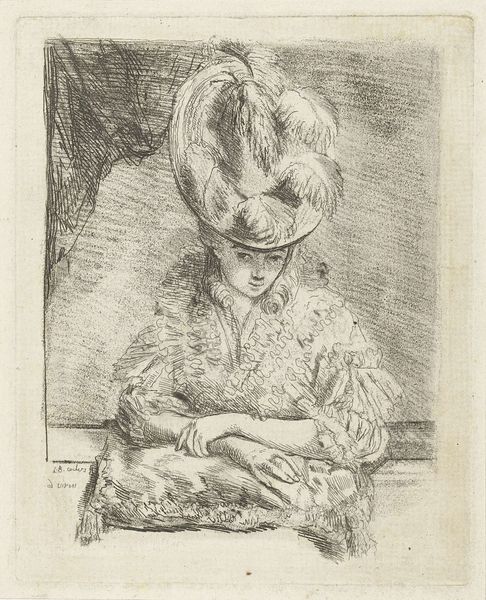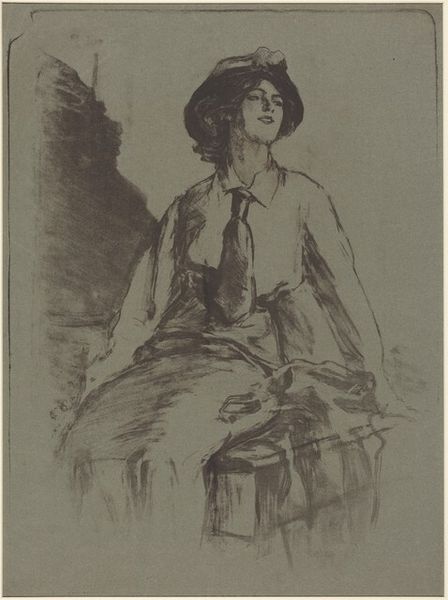
Dimensions: 240 × 189 mm (image/plate); 244 × 191 mm (sheet)
Copyright: Public Domain
Curator: Welcome. We’re standing before Donald Shaw MacLaughlan’s "Drypoint Number Two: Portrait," created in 1909. This work offers a glimpse into the artist's exploration of portraiture through the drypoint technique. Editor: There's a vulnerability that strikes me immediately. The etched lines are delicate, yet the subject, particularly the hands and the set of her jaw, feel almost stoic. Curator: The drypoint method is interesting here; instead of acid, MacLaughlan directly inscribed the image onto the plate, creating a burr that holds extra ink. The fuzzy lines enhance the introspective mood, wouldn't you agree? Editor: Absolutely. Looking at her ornate hat, I can't help but wonder about the role such accessories played at the time –signifiers of status, expressions of personal style, or even veiled declarations of identity? It's such a strong presence here. Curator: Precisely. Headwear was hugely important in early 20th century social circles and an insight into class and aspirations. Her direct, but soft gaze evokes a sense of both confidence and perhaps… fragility. The lines are loose, giving it an impressionistic quality. Editor: Yes, her gaze anchors the whole composition. I find myself focusing on the almost circular pattern of her ruff, leading the eyes upwards to meet the directness in the look of the sitter. To me, that line reads as very purposeful, an invitation into her gaze. What is she considering, I wonder? Curator: What makes this work truly captivating is that it avoids idealization. We see a real person with maybe more on their mind than is first obvious from this piece of printed paper, sitting there for us now, across the decades. Her look is haunting. Editor: It’s those faint, fragile strokes of the drypoint that make the moment captured seem timeless. She invites conversation, it’s that symbolism that still speaks volumes. A window into a particular historical lens of that period. Curator: Indeed. This artwork provides a rich commentary on identity and social structures of that period, allowing viewers to reflect on their own understanding of both. Editor: A delicate but complex study that continues to offer us something fresh each time we encounter it.
Comments
No comments
Be the first to comment and join the conversation on the ultimate creative platform.
